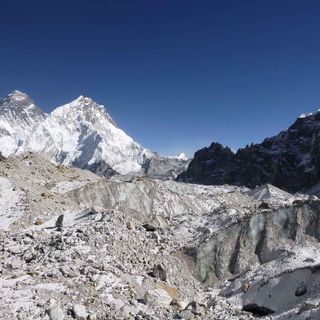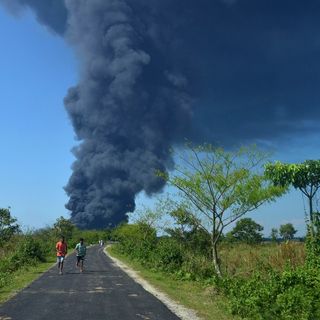Findings from a new three-year study suggest that small, low-lying islands dotted around the Pacific Ocean and the Caribbean Sea, such as the Polynesian island nations of Kiribati and Tuvalu and the Maldives, may not disappear. This is because islands have the ability to naturally rise to survive the increase in sea levels as tides keep moving sediments along the coast to create a higher elevations.
Islands were formed hundreds of thousands of years ago as a result of waves that moved sediment or reef material onto one area. This is a natural defense mechanism that continues even today, explains the lead author of the study, Gerd Masselink, professor of coastal geomorphology at U.K.’s University of Plymouth.
For the study, researchers developed a to-scale model of Fatato Island, part of the Funafuti Atoll in Tuvalu. They put this model in a specialist simulator called the Coastal Ocean and Sediment Transport (COAST) Lab that imitates different oceanic conditions. Then they manipulated the conditions to imitate what may happen in the future as global warming causes sea levels to rise. One such scenario was raising the sea level by almost 0.75 meters, the level at which sea levels have been predicted to rise by 2100 as per the Intergovernmental Panel on Climate Change.
Researchers found that the island crest, or the top of the land mass, also rose by 0.7 meters, “keeping pace with the sea level rise and staving off any island drowning.”
While a majority of the tiny islands in localities covered by the study remain uninhabited, the populations from the larger ones account for one million people, who rely on fishing and tourism for their livelihood on these islands. But threatened by tsunamis, storms, rise in sea levels, nations have already started preparing to either relocate their populations within the next few decades, or build coastal defences such as sea walls to protect them.
Related on The Swaddle:
The Himalayas Are Set to Lose 66% of Their Ice by 2100
However, results from this study, say the authors, will help in a better understanding of how these islands will physically change due to the rise in sea levels and the techniques needed to deal with the consequences of climate change. For instance, researchers said, sea walls are hampering the natural ability of the islands to rise with the rise in sea levels. “If you stop the flooding of the islands, you also stop the movement of the sediment on top of the island,” Masselink said.
The authors say the conclusions also provide an opportunity to think of other ways to deal with the effects of global warming. One of these is to think of climate-resistance infrastructure such as movable homes, or building them on stilts so islanders who have enough space can adapt to changes in their environment when needed. Another possibility to safeguard islands from drowning could be to consider dredging or the process of excavating material from a water environment for the purpose of reshaping the land. By dredging coral sand and sediments found in island lagoons and moving them closer to the coast, it might help with the natural process of islands being able to raise their height.
Hideki Kanamaru, the natural resources officer with the UN Food and Agriculture Organization in Asia-Pacific, said in response to the study that even as islands adapt naturally to the rise in sea levels, it is humans that will need to be cautious about keeping global warming levels in check to help our fellow humans, the island communities, in protecting their homelands.




